Technology
Changing face of technology in construction materials
Published
8 years agoon
By
admin
In today’s fast paced and highly-competitive global business environment, disruption has emerged as the new normal.
There is marked uncertainty, change and complexity in operations, and businesses have now shaken up their industries. By introducing innovative products and services and streamlining systems, businesses are braving the creative storm and are pacing themselves for the future. At the core of this disruption is technology, which has accelerated growth across sectors and prompted the use of innovation in business. In the real estate and construction space, technology and innovation are often seen as responsible for shaping the cities we live and work in and are at the forefront of this disruption. At present, most construction materials we use are non-renewable and with the pace of development, we are on the brink of facing a serious scarcity of resources; signs of which are evident. Some prime examples of depleting resources are sand, timber and other raw materials required for cement.
At this juncture, technologists, engineers and regulatory bodies have to come forward with innovative and ‘safe and sufficient’ technologies. To combat the shortage of coarse and fine aggregates, the technology of sintering fly ash has already been developed and is in place. Within the industry, there is a growing need to consciously use this in lower grades of concretes, which can liberate the natural aggregates for higher grades of concretes. At this stage, the role of regulatory bodies like National Council for Cement and Building Materials (NCCBM), Bureau of Indian Standards(BIS) and National Building Code (NBC) is integral to standardisation of this development for widespread manufacturing and use.
A big opportunity for the construction sector to make optimum use of, is recycling building debris, just by simple controlled crushing and subsequent screening to different fractions. By promoting this concept among smaller real estate developers at local consumption point levels, this small ripple can create big waves. Not only will it help the local administration to keep the towns and cities free of debris, it will also minimise long distance hauls for delivering transport and saving fossil fuel and the associated pollution and risks of road accidents, traffic congestion, etc. Although this supporting technology is very basic and simple, its implementation requires honest and sensible facilitation from the local civic bodies.
As far as the ‘safe and sufficient’ technologies are concerned, there is a huge scope for development. The basic premise of which, is playing with the design aspects, for example, keeping the capacity same, engineers can improvise in shape and configuration of a RCC column and bring in economic material consumption by leveraging section modili properties.
Another breakthrough in the construction world is the use of ferro-cement, which is a material comprising wire meshes and cement mortar. Besides bringing in considerable savings in material consumption safety by judiciously using it in building components, its applicability is vast due to low weight and non-requirement of a framework.
With the right use of ferro-cement, it also offers pleasing aesthetics. But before we can apply this widely in the industry, this improvised but scientific technology needs to be validated and vetted by BIS, NCCBM for better assurance and large s cale acceptance. Precast technology with ferro-cement improvisation will also open a new horizon in rural housing with the following distinct advantages:
1.Safe and strong components.
2.Faster construction.
3.Flexible adoption – when using ferro-cement, people can opt for a strong and stable frame only, while elements such as walls, roof and partitions may be completed with locally available materials like bamboo, timber, stone lamina, etc.
4.Sleeker structures with highest properties, prevention of wastage of materials.
As an example of the use of ferro-cement in roofing systems, precast roofing slabs of 1000 mm x 500 mm size are 50 mm thick, cast with 1:4 sand-cement, latex modified mortar, 4 x 5 mm bars at the periphery and two at the centre along the shorter span and chicken wire mesh at the mid depth, weighing around 67 kg, when fully dried. During load trial over a period of one month each slab of 0.5 m2 area withstood around 470 kg of live load, apart from its self load. Such innovative designs can not only save coarse aggregates and steel to a great extent, but also provide higher load carrying capacity safely. This configuration was a breakthrough for the construction industry.
The scope and opportunity of playing around with the shapes and configurations are unlimited and can be economised in mass and centralised constructions.
High performance concrete has also been an important innovation in the construction sector as complex building and infrastructure projects can greatly benefit from this. Due to this, we are able to delve deeper into the complexities of cement, binder, aggregates, water, admixture and other materials to develop a base that is customised to the nature and requirements of the structure. At present, we are pumping C95/M120 Self Compacting Concrete with minimal creeping and shrinkage to the 118th floor of a premium property in Lower Parel (Mumbai), as well as production of M50 high early strength concrete for tunnel segments of the upcoming Mumbai Metro with a corrosion free life of up to 150 years.
For many years, architects and structural engineers have demanded the best construction materials, which has led to out-of-the-box thinking and development of complex design tools. As a result, self compacting, leveling and placing concrete was created, which gives engineers and architects the confidence to design their dream projects with ease.
By bringing in cutting-edge innovation in material chemistry and rheology studies to the local and small volume needs, the first ready to use wet mix concrete was created in small 35 kg bags. This unique product guarantees quality assurance and sustainable construction in the space of affordable housing, job sites in conjusted areas where accessibility is a big challenge and also big construction sites where low volumes of concrete are required for ease of construction. The product is also a prime example of disruptive innovation in the repair segment, which has been dominated by dry mix products.
Three-dimensional printing, a technology which has been making waves in several other industries, has also found its way into building segment and is highly acclaimed as the future of construction. Some of its key benefits are speed, design freedom, flexibility, accuracy and we are already working with students and professionals to develop high speed 3D printable materials like mud, mortar and concrete.
Another interesting development in the construction segment, has been the evolution of fibres. Since Biblical times, fibres have been used to strengthen brittle matrices, but it was only during the 1960s, that steel fibres were proposed as a dispersed reinforcement for concrete. Since then, the material has developed considerably, so has our knowledge of the material, based on theoretical solutions and experimental findings. We have seen that test methods, which have been transferred from high-strength composites are very effective, however, due to compatibility issues, practical applications are few. To address this, microfiber pre-blended cement has been made available in the Indian markets, which acts as a binding agent and ensures strong and durable structures.
During the process of construction, plastering is one of the main and most challenging activities due to several reasons including shortage of skilled manpower and plastering sand in metros. To solve this problem, wet spray plastering systems have been innovated. This is essentially, a very high-quality plaster with low water absorption and permeability along with a high bond strength against the host surface. By using this in construction, builders are able to enjoy high productivity, maintain consistency, reduce their dependency on labour and ensure negligible wastage of raw materials.
With these and several other innovations, it is now the responsibility of all stakeholders to wake up, think and contribute to such simple yet effective technologies for the service to mankind. In developed countries, there is a fine for wasting food, similarly ‘energy saved is energy produced’ and we must move, with conscious efforts toward the new proverb ‘materials saved are materials preserved, and sustainability achieved’.
Authored by Pranav Desai, Head, Construction Development and Innovation Center (CDIC) and Product Development, Nuvoco Vistas Corp Ltd.
You may like
-


Technology plays a critical role in achieving our goals
-
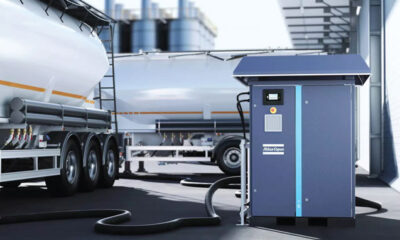

Empowering Construction 4.0
-


Pacific Avenue Completes Acquisition of FLSmidth Cement; Rebrands as Fuller Technologies
-


Decarbonising Indian Cement: A Net-Zero Roadmap
-


We build in extra safeguards beyond standard practice
-


We prioritise long-term durability
Concrete
Technology plays a critical role in achieving our goals
Published
2 weeks agoon
December 24, 2025By
admin
Arasu Shanmugam, Director and CEO-India, IFGL, discusses the diversification of the refractory sector into the cement industry with sustainable and innovative solutions, including green refractories and advanced technologies like shotcrete.
Tell us about your company, it being India’s first refractory all Indian MNC.
IFGL Refractories has traditionally focused on the steel industry. However, as part of our diversification strategy, we decided to expand into the cement sector a year ago, offering a comprehensive range of solutions. These solutions cover the entire process, from the preheater stage to the cooler. On the product side, we provide a full range, including alumina bricks, monolithics, castables, and basic refractories.
In a remarkably short span of time, we have built the capability to offer complete solutions to the cement industry using our own products. Although the cement segment is new for IFGL, the team handling this business vertical has 30 years of experience in the cement industry. This expertise has been instrumental in establishing a brand-new greenfield project for alumina bricks, which is now operational. Since production began in May, we are fully booked for the next six months, with orders extending until May 2025. This demonstrates the credibility we have quickly established, driven by our team’s experience and the company’s agility, which has been a core strength for us in the steel industry and will now benefit our cement initiatives.
As a 100 per cent Indian-owned multinational company, IFGL stands out in the refractory sector, where most leading players providing cement solutions are foreign-owned. We are listed on the stock exchange and have a global footprint, including plants in the United Kingdom, where we are the largest refractory producer, thanks to our operations with Sheffield Refractories and Monocon. Additionally, we have a plant in the United States that produces state-of-the-art black refractories for critical steel applications, a plant in Germany providing filtering solutions for the foundry sector, and a base in China, ensuring secure access to high-quality raw materials.
China, as a major source of pure raw materials for refractories, is critical to the global supply chain. We have strategically developed our own base there, ensuring both raw material security and technological advancements. For instance, Sheffield Refractories is a leader in cutting-edge shotcreting technology, which is particularly relevant to the cement industry. Since downtime in cement plants incurs costs far greater than refractory expenses, this technology, which enables rapid repairs and quicker return to production, is a game-changer. Leading cement manufacturers in the country have already expressed significant interest in this service, which we plan to launch in March 2025.
With this strong foundation, we are entering the cement industry with confidence and a commitment to delivering innovative and efficient solutions.
Could you share any differences you’ve observed in business operations between regions like Europe, India, and China? How do their functionalities and approaches vary?
When it comes to business functionality, Europe is unfortunately a shrinking market. There is a noticeable lack of enthusiasm, and companies there often face challenges in forming partnerships with vendors. In contrast, India presents an evolving scenario where close partnerships with vendors have become a key trend. About 15 years ago, refractory suppliers were viewed merely as vendors supplying commodities. Today, however, they are integral to the customer’s value creation chain.
We now have a deep understanding of our customers’ process variations and advancements. This integration allows us to align our refractory solutions with their evolving processes, strengthening our role as a value chain partner. This collaborative approach is a major differentiator, and I don’t see it happening anywhere else on the same scale. Additionally, India is the only region globally experiencing significant growth. As a result, international players are increasingly looking at India as a potential market for expansion. Given this, we take pride in being an Indian company for over four decades and aim to contribute to making Aatma Nirbhar Bharat (self-reliant India) a reality.
Moving on to the net-zero mission, it’s crucial to discuss our contributions to sustainability in the cement industry. Traditionally, we focused on providing burnt bricks, which require significant fuel consumption during firing and result in higher greenhouse gas emissions, particularly CO2. With the introduction of Sheffield Refractories’ green technology, we are now promoting the use of green refractories in cement production. Increasing the share of green refractories naturally reduces CO2 emissions per ton of clinker produced.
Our honourable Prime Minister has set the goal of achieving net-zero emissions by 2070. We are committed to being key enablers of this vision by expanding the use of green refractories and providing sustainable solutions to the cement industry, reducing reliance on burnt refractories.
Technology is advancing rapidly. What role does it play in helping you achieve your targets and support the cement industry?
Technology plays a critical role in achieving our goals and supporting the cement industry. As I mentioned earlier, the reduction in specific refractory consumption is driven by two key factors: refining customer processes and enhancing refractory quality. By working closely as partners with our customers, we gain a deeper understanding of their evolving needs, enabling us to continuously innovate. For example, in November 2022, we established a state-of-the-art research centre in India for IFGL, something we didn’t have before.
The primary objective of this centre is to leverage in-house technology to enhance the utilisation of recycled materials in manufacturing our products. By increasing the proportion of recycled materials, we reduce the depletion of natural resources and greenhouse gas emissions. In essence, our focus is on developing sustainable, green refractories while promoting circularity in our business processes. This multi-faceted approach ensures we contribute to environmental sustainability while meeting the industry’s demands.
Of course, this all sounds promising, but there must be challenges you’re facing along the way. Could you elaborate on those?
One challenge we face is related to India’s mineral resources. For instance, there are oxide deposits in the Saurashtra region of Gujarat, but unfortunately, they contain a higher percentage of impurities. On the magnesite side, India has deposits in three regions: Salem in Tamil Nadu, Almora in Uttarakhand, and Jammu. However, these magnesite deposits also have impurities. We believe the government should take up research and development initiatives to beneficiate these minerals, which are abundantly available in India, and make them suitable for producing high-end refractories. This task is beyond the capacity of an individual refractories company and requires focused policy intervention. While the government is undertaking several initiatives, beneficiation of minerals like Indian magnesite and Indian oxide needs to become a key area of focus.
Another crucial policy support we require is recognising the importance of refractories in industrial production. The reality is that without refractories, not even a single kilogram of steel or cement can be produced. Despite this, refractories are not included in the list of core industries. We urge the government to designate refractories as a core industry, which would ensure dedicated focus, including R&D allocations for initiatives like raw material beneficiation. At IFGL, we are taking proactive steps to address some of these challenges. For instance, we own Sheffield Refractories, a global leader in shotcrete technology. We are bringing this technology to India, with implementation planned from March onwards. Additionally, our partnership with Marvel Refractories in China enables us to leverage their expertise in providing high-quality refractories for steel and cement industries worldwide.
While we are making significant efforts at our level, policy support from the government—such as recognising refractories as a core industry and fostering research for local raw material beneficiation—would accelerate progress. This combined effort would greatly enhance India’s capability to produce high-end refractories and meet the growing demands of critical industries.
Could you share your opinion on the journey toward achieving net-zero emissions? How do you envision this journey unfolding?
The journey toward net zero is progressing steadily. For instance, even at this conference, we can observe the commitment as a country toward this goal. Achieving net zero involves having a clear starting point, a defined objective, and a pace to progress. I believe we are already moving at an impressive speed toward realising this goal. One example is the significant reduction in energy consumption per ton of clinker, which has halved over the past 7–8 years—a remarkable achievement.
Another critical aspect is the emphasis on circularity in the cement industry. The use of gypsum, which is a byproduct of the fertiliser and chemical industries, as well as fly ash generated by the power industry, has been effectively incorporated into cement production. Additionally, a recent advancement involves the use of calcined clay as an active component in cement. I am particularly encouraged by discussions around incorporating 12 per cent to 15 per cent limestone into the mix without the need for burning, which does not compromise the quality of the final product. These strategies demonstrate the cement industry’s constructive and innovative approach toward achieving net-zero emissions. The pace at which these advancements are being adopted is highly encouraging, and I believe we are on a fast track to reaching this critical milestone.
– Kanika Mathur
Technology
ARAPL Reports 175% EBITDA Growth, Expands Global Robotics Footprint
Affordable Robotic & Automation posts strong Q2 and H1 FY26 results driven by innovation and overseas orders
Published
3 months agoon
October 15, 2025By
admin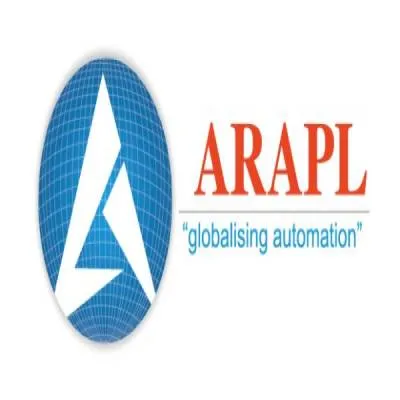
Affordable Robotic & Automation Limited (ARAPL), India’s first listed robotics firm and a pioneer in industrial automation and smart robotic solutions, has reported robust financial results for the second quarter and half year ended September 30, 2025.
The company achieved a 175 per cent year-on-year rise in standalone EBITDA and strong revenue growth across its automation and robotics segments. The Board of Directors approved the unaudited financial results on October 10, 2025.
Key Highlights – Q2 FY2026
• Strong momentum across core automation and robotics divisions
• Secured the first order for the Atlas AC2000, an autonomous truck loading and unloading forklift, from a leading US logistics player
• Rebranded its RaaS product line as Humro (Human + Robot), symbolising collaborative automation between people and machines
• Expanded its Humro range in global warehouse automation markets
• Continued investment in deep-tech innovations, including AI-based route optimisation, autonomy kits, vehicle controllers, and digital twins
Global Milestone: First Atlas AC2000 Order in the US
ARAPL’s US-based subsidiary, ARAPL RaaS (Humro), received its first order for the next-generation Atlas AC2000 autonomous forklift from a leading logistics company. Following successful prototype trials, the client placed an order for two robots valued at Rs 36 million under a three-year lease. The project opens opportunities for scaling up to 15–16 robots per site across 15 US warehouses within two years.
The product addresses an untapped market of 10 million loading docks across 21,000 warehouses in the US, positioning ARAPL for exponential growth.
Financial Performance – Q2 FY2026 (Standalone)
Net Revenue: Rs 25.7587 million, up 37 per cent quarter-on-quarter
EBITDA: Rs 5.9632 million, up 396 per cent QoQ
Profit Before Tax: Rs 4.3808 million, compared to a Rs 360.46 lakh loss in Q1
Profit After Tax: Rs 4.1854 lakh, representing 216 per cent QoQ growth
On a half-year basis, ARAPL reported a 175 per cent rise in EBITDA and returned to profitability with Rs 58.08 lakh PAT, highlighting strong operational efficiency and improved contribution from core businesses.
Consolidated Performance – Q2 FY2026
Net Revenue: Rs 29.566 million, up 57% QoQ
EBITDA: Rs 6.2608 million, up 418 per cent QoQ
Profit After Tax: Rs 4.5672 million, marking a 224 per cent QoQ improvement
Milind Padole, Managing Director, ARAPL said, “Our Q2 results reflect the success of our innovation-led growth strategy and the growing global confidence in ARAPL’s technology. The Atlas AC2000 order marks a defining milestone that validates our engineering strength and accelerates our global expansion. With a healthy order book and continued investment in AI and autonomous systems, ARAPL is positioned to lead the next phase of intelligent industrial transformation.”
Founded in 2005 and headquartered in Pune, Affordable Robotic & Automation Ltd (ARAPL) delivers turnkey robotic and automation solutions across automotive, general manufacturing, and government sectors. Its offerings include robotic welding, automated inspection, assembly automation, automated parking systems, and autonomous driverless forklifts.
ARAPL operates five advanced plants in Pune spanning 350,000 sq ft, supported by over 400 engineers in India and seven team members in the US. The company also maintains facilities in North Carolina and California, and service centres in Faridabad, Mumbai, and San Francisco.
Technology
M.E. Energy Bags Rs 490 Mn Order for Waste Heat Recovery Project
Second major EPC contract from Ferro Alloys sector strengthens company’s growth
Published
3 months agoon
October 15, 2025By
admin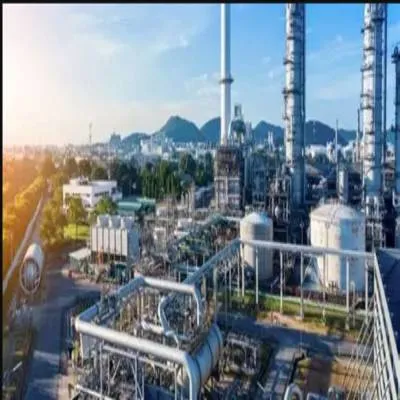
M.E. Energy Pvt Ltd, a wholly owned subsidiary of Kilburn Engineering Ltd and a leading Indian engineering company specialising in energy recovery and cost reduction, has secured its second consecutive major order worth Rs 490 million in the Ferro Alloys sector. The order covers the Engineering, Procurement and Construction (EPC) of a 12 MW Waste Heat Recovery Based Power Plant (WHRPP).
This repeat order underscores the Ferro Alloys industry’s confidence in M.E. Energy’s expertise in delivering efficient and sustainable energy solutions for high-temperature process industries. The project aims to enhance energy efficiency and reduce carbon emissions by converting waste heat into clean power.
“Securing another project in the Ferro Alloys segment reinforces our strong technical credibility. It’s a proud moment as we continue helping our clients achieve sustainability and cost efficiency through innovative waste heat recovery systems,” said K. Vijaysanker Kartha, Managing Director, M.E. Energy Pvt Ltd.
“M.E. Energy’s expansion into sectors such as cement and ferro alloys is yielding solid results. We remain confident of sustained success as we deepen our presence in steel and carbon black industries. These achievements reaffirm our focus on innovation, technology, and energy efficiency,” added Amritanshu Khaitan, Director, Kilburn Engineering Ltd
With this latest order, M.E. Energy has already surpassed its total external order bookings from the previous financial year, recording Rs 138 crore so far in FY26. The company anticipates further growth in the second half, supported by a robust project pipeline and the rising adoption of waste heat recovery technologies across industries.
The development marks continued momentum towards FY27, strengthening M.E. Energy’s position as a leading player in industrial energy optimisation.

ICRA Sees Steady Cement Demand Growth Ahead

India Imposes Three-Year Tariff on Select Steel Imports

GCCA India–NCB Carbon Uptake Report Released at NCB Foundation Day

Global Crude Steel Output Falls 4.6% to 140.1 Mt in Nov 2025

Shree Cement To Invest Rs 20 Billion In Maharashtra Plant

ICRA Sees Steady Cement Demand Growth Ahead

India Imposes Three-Year Tariff on Select Steel Imports

GCCA India–NCB Carbon Uptake Report Released at NCB Foundation Day

Global Crude Steel Output Falls 4.6% to 140.1 Mt in Nov 2025

Shree Cement To Invest Rs 20 Billion In Maharashtra Plant
Trending News
-

 Uncategorized3 weeks ago
Uncategorized3 weeks agoNMDC Steel Posts Record Output And Efficiency Gains In November
-

 Concrete4 weeks ago
Concrete4 weeks agoNiraj Cement JV Wins Railway and Metro Contracts
-
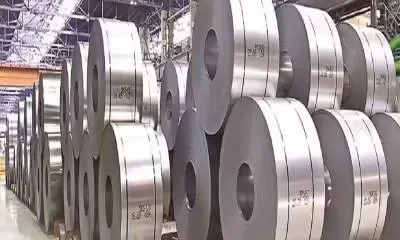
 Uncategorized3 weeks ago
Uncategorized3 weeks agoLloyds Metals, Tata Steel Sign MoU For Strategic Partnership
-
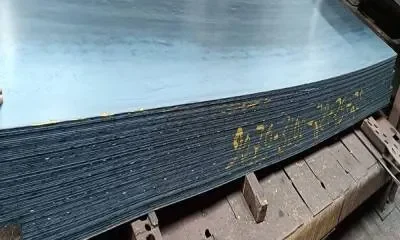
 Uncategorized3 weeks ago
Uncategorized3 weeks agoEnlight Metals Enters Chemical Trading With New Subsidiary


